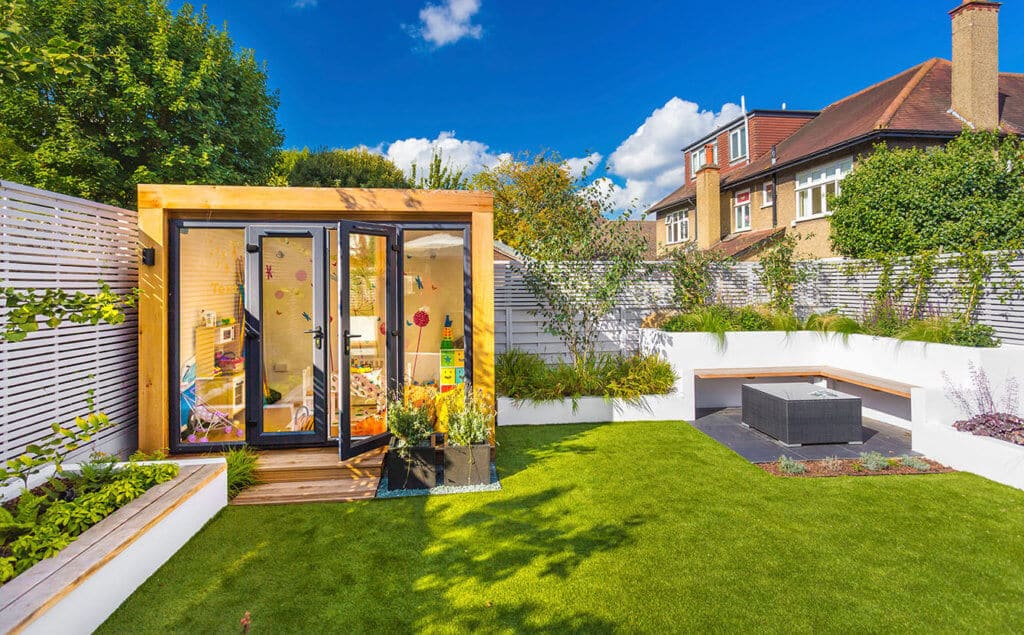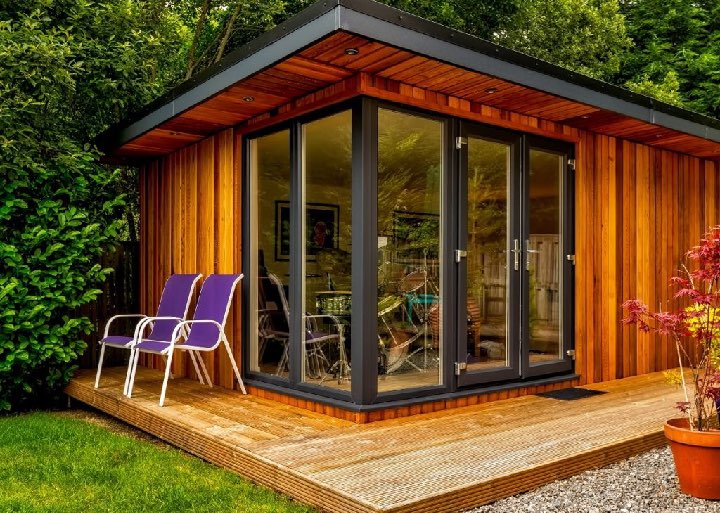Excellent Tips For Planning Permission For Garden Extension
What Permissions Do You Require For Garden Rooms As Well As Other Structures That Are Related To Highways?If you are considering building gardens, conservatories, and outhouses, as well as extensions or garden offices, road safety concerns are a factor to consider whether you require planning permission. Here are some important aspects to take into consideration regarding highways:
Planning permission will be required if the structure impacts drivers' viewlines or intersects at junctions or bends on the road. The planning authorities will determine whether the construction creates a risk to road safety.
Proximity of the highway
Planning permission is generally required for buildings that are built close to the highway. For instance front garden rooms, extensions along the street or even extensions in the street. Distance rules are in place to ensure that the structure doesn't interfere with the safe operation and use of the highway.
Access and Egress
Planning permission might be needed when you plan to alter or create new access points. The access point and the egress point must be safe to avoid disrupting traffic.
Parking Facilities
Planning permission might be required if a proposed structure impacts existing parking spaces or demands additional parking. The planning authorities will determine whether the development can provide sufficient parking space for the neighborhood and whether there are parking problems on the street.
Traffic Generation
Planning permission will be needed for developments likely to increase traffic, like gardens that serve as offices for business with clients present. This includes a review of local traffic levels as well as road condition.
Impact on Pedestrian Access
If the structure proposed is encroaching upon pedestrian walkways or pavements it is necessary to obtain planning permission. Safety of pedestrians and making sure that they are able to get to the site is of paramount importance.
Roads and Construction Impacts
Sometimes, planning permission is required to reduce the effect construction activities cause on roads. The planning authority may impose conditions to limit the disruption to the roads while construction takes place.
Drainage and water runoff
The impact of a development on drainage, water runoff and the highway is also something to be considered. The permission for planning will ensure that the structure won't exacerbate drainage or flooding issues that may impact the road.
Street Furniture and Utilities
Planning permission will be necessary if the project impacts street furniture or underground utilities. The planning authority will work closely with relevant agencies to resolve any concerns.
Highway Authority Guidelines for Compliance:
Local highway authorities have their own set of guidelines and rules regarding developments within close to highways. The planning permit will guarantee that these rules are observed in order to keep the safety and efficiency of roads.
Noise and disturbance from traffic:
Planning permission is required in the event that the proposed structure is likely to create more noise and disturbance (e.g. A garden office that is used for deliveries or visits).
Accessibility to public transport:
The planning permission is required for developments that could be detrimental to public transport facilities, such as stations or bus stops. Effects on users of public transport as well as integration into the transport system will be considered.
Highway safety is a major aspect in determining if an extension, conservatory, garden room or outhouse, garden office or extension can be accepted. To make sure that the development you are planning does not negatively impact the safety of roads and traffic flow, pedestrians access, or the overall infrastructure, be sure to verify this. In consultation with the local authority for planning as well as the highway authority during the early stages of planning could address issues and ensure that the development is in compliance with all relevant regulations. Check out the recommended cheapest way to heat a garden room for site tips including garden rooms near me, garden rooms near me, garden room vs extension, outhouses for garden, my outhouse, armoured cable for garden room, out house for garden, herts garden rooms, how to lay decking on soil, garden room planning permission and more.

What Kind Of Planning Permission Is Needed For Gardens, Rooms Etc. In Terms Of Environmental Impact?
It is important to consider the impacts on the environment when designing garden rooms or conservatories. Here are a few of most important environmental factors that you must consider: Biodiversity, wildlife, and the other natural resources.
If the proposed structure would impact wildlife habitats in your area, such as local trees, hedgerows and ponds, you'll require permission to plan the project. To assess and minimize the impact of biodiversity, an ecological assessment may be necessary.
Habitats, Protected Species, and the Environment:
If the site is home to protected species (e.g. bats or newts, etc.)) or is located within or near protected habitats (e.g., Sites of Special Scientific Interest : SSSI) the planning permission is crucial. It is crucial to adopt special steps to safeguard these species.
Tree Preservation Orders:
Planning permission could be required if the project involves the removal or alteration of trees that are covered by TPOs. The local authority may ask for a replacement plant as well as alternative mitigation measures.
Risk of flooding and Water Management: Risk and Water Management:
For developments in flood-prone areas or close to water bodies planning permission is required. Assessments of flood risk (FRAs) are required at times to ensure the structure doesn't increase flood risks and that it has sufficient drainage.
Sustainable Construction Practices
It may be necessary to obtain planning permission in order to utilize sustainable construction methods and materials. It is essential to take into consideration the efficiency in energy use of materials, their insulation, and the carbon footprint they leave.
Surface Runoff and Drainage
Impact of new structures on surface runoff and drainage are major environmental concerns. The permission to plan will guarantee that the drainage system is in place, and helps prevent flooding or waterlogging.
Soil and Stability of Land
A planning permit is needed when the proposed development could alter the stability of the soil or land. This includes potential issues like soil erosion or subsidence, especially on sloped sites.
Air Quality
Planning permits are required for development near industrial zones or major highways that can impact local air pollution. This ensures that the levels of air pollution remain within acceptable levels, and mitigation measures are implemented.
Noise Pollution:
Planning permission might be required in the event that a garden room usage could cause a significant amount of noise. The local authority must evaluate the level of noise, and any potential impact on neighbors as well as the surrounding environment.
Waste Management:
An effective waste management system is crucial during and following construction. Planning permission assures that there are adequate provisions for waste disposal and recycling to minimize environmental impacts.
Energy Efficiency
Planning permission can include conditions for energy efficiency, like the use of solar panels, high-performance glass, or other green technologies. This can reduce the carbon footprint of the building.
Environmental Regulations
Environmental regulations are at both the national and local level include the UK Environmental Protection Act. Planning permission assures that all legal obligations are met and ensures that the project is sustainable for the environment.
Planning permission for garden office outsidehouse, conservatory, or an extension, must take into consideration a number of environmental implications. Consult the local authority for planning as early as possible during the planning stage to ensure that you know the requirements specific to your project. Read the top rated office outhouse for more tips including luxury outhouse, 4m x 4m garden room, insulated garden buildings, outhouse for garden, 4m x 4m garden room, garden room, conservatories and garden rooms, garden outhouses, garden room conservatory, garden rooms near me and more.

Regarding Location Restrictions What Kind Of Planning Permission Are You Required To Build Garden Rooms?
If you are contemplating building an outdoor space, a conservatory, outhouse, garden office, or extension The restrictions on the area will determine if permits for planning are required. Be aware of these essential factors when deciding the location of your building: Distance from boundaries
Any building within 2 meters of the property boundaries cannot exceed a height of 2.5 meters. If the height exceeds this limit then planning permission must be sought.
Front of the property
Buildings or extensions that are constructed in front of the main elevation of a home (the face-facing side) usually require planning permission. This is because allowed development rights usually prohibit them.
The property's side:
Side extensions must comply with the specific height and dimension restrictions and usually require planning permission if they exceed the existing wall of the sidewall.
Back of the Property
There are height and size limits for rear extensions. The planning permission must be obtained when the extensions exceed permitted growth limit.
Designated Zones
In areas of Outstanding Natural Beauty (AONB), National Parks and World Heritage Sites there are stricter regulations. Every new building may require planning permission, regardless the size.
Listed Buildings:
The property that is classified as a building is subject to strict guidelines. Any new structure, modification, or extension will typically require approval for planning as well as listed building permission, regardless of its location on the property.
Green Belt Land:
Green belt land is protected by strict regulations on the construction of buildings to ensure open space. A permit is usually required for new construction or changes.
Flood Hazard Areas
Additional regulations can be imposed depending on whether the property is located in an area that is susceptible to flooding. They are intended to keep the building of a new structure from creating more flood risk. Planning permission and possibly a flood risk assessment may be required.
Urban vs. rural environments:
Urban and rural areas have different rules. Rural homes may have a softer approach to restrictions, such as the size and location of outbuildings.
Highways and Public Rights of Way
It could be necessary to seek planning permission if a construction site is near to roads or public rights of ways. This will ensure that the structure is not blocking views, security or access.
Shared Ownership and Leasehold Land
If you have a home which is leasehold or a part of in a shared ownership plan, it is possible to get additional permission from the owner or the managing entity. You may also need planning permission depending on local laws.
Adjacent to other structures:
If the new structure is planned to be constructed adjacent to existing structures or buildings especially those located on adjacent property, planning permission could be needed to ensure the structure does not have a negative impact on neighboring buildings or land.
Always check with your local planning authority to receive a specific plan that is specifically tailored to your property as well as its location and. Regulations can vary significantly depending on local laws, and ensuring the compliance of all applicable restrictions is essential to avoid legal problems and penalties. Check out the best garden rooms conservatories for blog examples including copyright garden buildings, garden room conservatory, garden office hertfordshire, copyright outhouse, 4m x 4m garden room, outhouse garden rooms, garden rooms, garden rooms near me, armoured cable for garden room, how to get power to a garden room and more.
